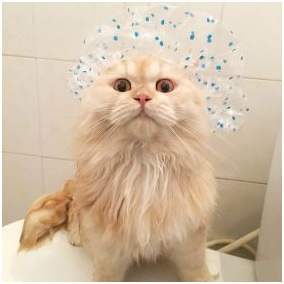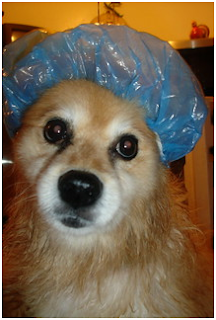All You Need To Know About Bathing Your Pet
Courtesy of Life's Abundance Post 7/19/21
“You smell like a wet dog” isn’t much of a compliment, is it? While most of us know the rush of warm fuzzies you get from snuggling up close with a clean, fresh pet, most pet owners are also aware of the opposite end of the spectrum: the stinky side.
Perhaps you’ve spent the past year closer than ever to your pet, so you may be more familiar than you’ve ever been with their particular…fragrance, shall we say. Questions about your pet’s skin and coat are some of the most common conversation topics in the vet clinic, so let’s tackle some of the most frequently asked questions about what’s normal, what may need a vet visit, and what are the best things you can do at home to help your pet look and feel their best.
How often should I bathe my pet?
If the thought of struggling to get your dog in the bath on a daily basis gives you hives, here’s the good news: daily bathing is rarely the answer. For a pet with good skin and coat health, a good monthly washing may be all they need in order to clean away accumulated dirt and oil and get them smelling nice. If you have a cat, the answer’s even better: since they groom themselves, healthy cats may not need baths from you at all (everyone cheer).
The actual answer is: wash your pet as often as they need. If your pet gets dirty all the time because they’re constantly getting in the mud, there’s no reason you can’t bathe them more frequently. It’s important to use the right shampoo to avoid over-drying the coat, stripping out oils, or causing flaking. More frequent bathing may also reduce the effectiveness of topical flea and tick products such as Advantage and Frontline.
Pets with medical conditions often require more frequent bathing as part of their treatment. Whether it’s a pet dealing with infection, a pet suffering from conditions like seborrhea (think of it like a form of doggie dandruff), or a pet with allergies who needs to remove environmental allergens from their coat, there are many reasons a pet may require bathing weekly, or even a few times a week. Make sure to follow your vet’s recommendations as to the type of shampoo and how to use it- it may seem like a lot of work, but topical treatments can be very effective and much nicer than needing to rely on a systemic treatment!
What’s the best type of shampoo to use?
If your pet has a medical condition, you may be prescribed a special shampoo. Think of it less as shampoo and more as skin medication. Keep in mind these tend to work very differently than your typical shampoo which is just there to gently clean, so be careful to follow the directions and don’t use it for other pets in the house. Many medicated pet shampoos may not even have any cleanser in them, so if you’re not sure, ask your vet if you need to first use an over the counter shampoo before using the medicated one. Some of the most common medications delivered via shampoo format are:
- antibacterials: chlorhexidine for skin infection
- antifungals: ketoconazole for yeast infection
- antiseborrhea: coal tar, salicylic acid, benzoyl peroxide, or sulfur to combat dandruff-like conditions
- anti-mite: lime sulfur dips for topical parasites such as demodectic mange
- anti-itch: oatmeal, hydrocortisone
For everyone else, shampoos designated for pets are your best choice. These shampoos have much less stripping action than human shampoos and are much gentler on the skin, so never use a human shampoo on your pet. If your pet has particularly sensitive skin, you may need to look for one with no fragrance added. For the rest of the crew, look for a gentle formula with conditioning properties like our very own amazing-smelling Revitalizing Shampoo. I’ve sniffed a lot of dog shampoo over the years, and this one takes the cake in the “wow your dog smells delightful” department. If you’ve tried it, you know.
What are signs my pet may need a vet visit?
Regular doggie-smell should resolve with a good cleaning. If they still feel oily or greasy, or still have a strange odor after bathing, make an appointment as this may be a sign of a problem that goes below the surface of the skin. Even smells that aren’t necessarily “bad,” but just strange, can be a sign something’s off (ever heard someone talk about their dog’s Frito feet? Yes, it’s a thing, and often means infection). Any red or raw patches should be evaluated as well, as these can be signs of allergies or infection.
Bathing is a good time to check your pet’s ears as well. While you don’t want to put shampoo and water in their ears, I like to clean my pet’s ears with a dedicated ear cleaner right before their bath. If your pet is prone to ear infection, you may also want to put a cotton ball in their ear before bathing to keep water out (Be gentle if you do this! There’s no need to stuff their ears full of the fluff).
So there you have it! Smelling like a wet dog might not seem like a compliment, but with the proper shampoo there’s no reason it couldn’t be. Here’s to a pleasant, snuggly summer!
If you found this interesting, check out these related stories:
The Secret Ingredient To A Sweet Smelling Pet



No comments:
Post a Comment